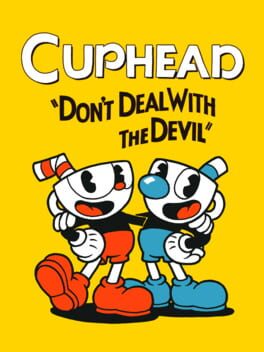Outspoken homages in video games have a tendency to be a surface-level reading of the source material, and the degree of authenticity that Cuphead commits to is the exception that proves this rule. Not only does it completely capture the look, sound, and overall sense of humor of rubberhose, but I was completely blown away by the attention to detail that's present here. The level entrances purposefully look like they're part of cels and not the painted overworld. Djimmi the Great's stage uses a miniature instead of a hand-drawn background. The audio for voices is so low in quality that every character sounds threatening. The title screen is ominous and drawn in a more realistic style than the rest of the game. I'm sure I missed tons of other little things that only animation aficionados would be able to pick up on, but the best part is that the style completely works in favor of the boss fight format. Most bosses that follow the multiple phase formula don't really have a good reason to do so, but Cuphead has the perfect reason: embracing the 1930s mentality of just having a desire to experiment and show off cool animation. The transformations that every boss goes through when transitioning through phases make it so that each one is its own little story, which is a great motivator to push forward and more than justifies the game's difficulty. The graphic that shows your level progress after you die supplements the feeling of getting a tiny bit further towards your goal each try, and of course all of these efforts would've been completely wasted if the character designs weren't as excellent as they are.
As for the bosses themselves, it feels like the goal is to outlast them rather than to defeat them, since you almost always deal damage constantly throughout every fight. The only skill you really learn over the course of the game is keeping track of an increasing number of hazards at once, which I'd say works in the game's favor since every object is cleverly contextualized (and nice to look at, of course), but I definitely wish there was more to it. There's something to be said for the straightforward simplicity that the gameplay embraces, especially when the visuals are anything but simple, but it would've been great if there was some strategy besides shooting until you fill your meter and then using your super. The different weapons feel like self-explanatory tools rather than ways to expand the gameplay- use the chaser when there's a phase where the boss has little health but is hard to hit, use the spread when a boss is stationary and possible to get close to. The nonexistent feedback also discourages experimentation, as there's no real way to tell how much more damage one move does compared to another and you just have to take the game's word for it when it tells you something's strong. I've been critical of the lack of mechanical depth, but that's probably because it's the only area that doesn't match the ambition of the rest of the game. The Moldenhauer brothers absolutely deserve all the praise in the world for putting together something this inspired, this passionate, and it makes me unbelievably happy that they've found success. BRAVO!
As for the bosses themselves, it feels like the goal is to outlast them rather than to defeat them, since you almost always deal damage constantly throughout every fight. The only skill you really learn over the course of the game is keeping track of an increasing number of hazards at once, which I'd say works in the game's favor since every object is cleverly contextualized (and nice to look at, of course), but I definitely wish there was more to it. There's something to be said for the straightforward simplicity that the gameplay embraces, especially when the visuals are anything but simple, but it would've been great if there was some strategy besides shooting until you fill your meter and then using your super. The different weapons feel like self-explanatory tools rather than ways to expand the gameplay- use the chaser when there's a phase where the boss has little health but is hard to hit, use the spread when a boss is stationary and possible to get close to. The nonexistent feedback also discourages experimentation, as there's no real way to tell how much more damage one move does compared to another and you just have to take the game's word for it when it tells you something's strong. I've been critical of the lack of mechanical depth, but that's probably because it's the only area that doesn't match the ambition of the rest of the game. The Moldenhauer brothers absolutely deserve all the praise in the world for putting together something this inspired, this passionate, and it makes me unbelievably happy that they've found success. BRAVO!
